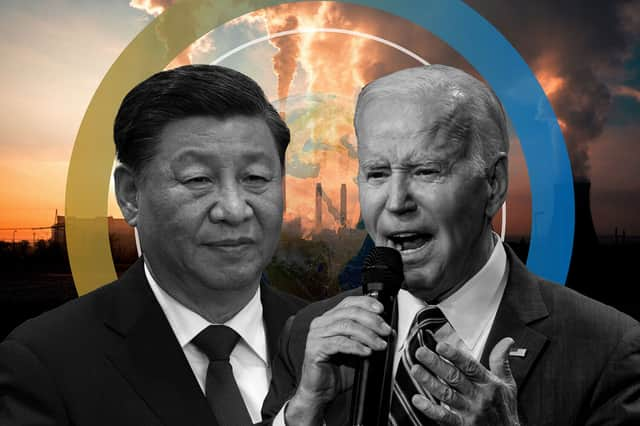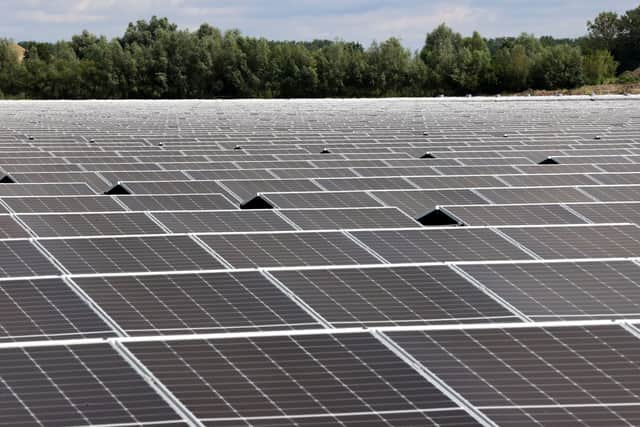Climate change: are ‘big four’ emitters actually downplaying their progress on renewables and CO2 emissions?


It’s easy, if you’re not careful, to become jaded about the climate crisis, especially when it seems like world leaders are prioritising what they see as more immediate challenges, from the state of the economy to the war in Ukraine. The current COP27 conference in Egypt has done little to change those perceptions, with a cautionary UN report on the world being on course to miss the 1.5C target gaining more media coverage than any of the agreements from Sharm El-Sheikh.
The world is “on the highway to climate hell with our foot still on the accelerator”, UN secretary-general Antonio Guterres warned at the start of COP27. This kind of rhetoric may well be needed to set the tone for crunch talks, but it can also make the rest of us feel a real sense of despair. Where’s the progress we’ve been promised? Where’s the hope that we can cling on to?
Advertisement
Hide AdAdvertisement
Hide AdOne source of hope may be found in a new report from the Energy & Climate Intelligence Unit (ECIU), a non-profit organisation, which has just released the findings of its second ‘Global Momentum Report’, titled The Big Four: Are major emitters downplaying their climate and clean energy progress? What it means by the “big four” are the biggest greenhouse gas emitters - namely China, the United States, the European Union and India.
While you might expect this report to be full of more doom and gloom, the opposite is largely true. It finds that these nations are actually making surprisingly fast progress on their climate commitments, thanks in part to the speedy rollout of renewable energy and electric transport. “The evidence presented here makes it likely, we suggest, that at least three of these Big Four emitters – China, the EU and India – will see faster progress towards a clean energy economy and thus towards falling emissions than they have set out in national targets and NDCs,” the report’s authors predict. (NDCs are Nationally Determined Contributions that play a key part in the Paris Climate Agreement).
Here’s a brief overview of what the report says about each of the Big Four…
China
China is installing 165 gigawatts (GW) of renewables this year, up 25% on the previous year, and sales of electric vehicles are projected to reach six million in 2022, double sales of non-EV cars in 2021. Renewables are also now a cheaper source of energy in China than coal, with the latter being used for crisis capacity rather long-term growth. The country’s emissions fell by a record 8% in the second quarter of 2022, and its emissions have now fallen in four consecutive quarters.
Advertisement
Hide AdAdvertisement
Hide AdChina is the world’s biggest emitter, responsible for between a quarter and a third of global emissions, and its NDC has been criticised as being well short of what would be needed to achieve 1.5C. Despite this, the report states that “the scale of activity in China is encouraging” and that “renewables deployment is at a level to ensure that emissions peak before 2025”.


United States
There’s an improving situation in the US too. When Joe Biden entered the White House one of his first pledges was to re-enter the Paris Agreement and reverse some of the damage done by Donald Trump. The US has an ambitious NDC that’s been rated as “almost sufficient” for 1.5C, and Biden’s $500 billion spending to deliver climate targets is almost certainly secure, even if the Democrats lose Congress in the Midterm elections.
On energy, it’s forecast that the US could generate as much as 85% of its power from renewables by 2030, and the nation is on course for half of all new cars to be electric by 2030.


The European Union
The EU may have been bounced into speeding up many of its energy policy changes by Vladimir Putin’s invasion of Ukraine in February, but it has been a wholesale acceleration of progress, with a focus on energy security. The report states: “The situation has shown European leaders in the starkest possible terms that continuing to rely on fossil fuels means import dependence, energy insecurity, high energy bills, and high state support for citizens and businesses struggling to afford it. It also shows that fossil fuel dependence compromises foreign policy, because it creates a situation where oil and gas are used as weapons of blackmail.”
Advertisement
Hide AdAdvertisement
Hide AdMany EU member states have upped their game on reducing emissions, and the summer saw “record solar generation” across the bloc. The report concludes that the EU could well bet set to announce “a new, more ambitious NDC target early next year”.
India
A powerhouse of the developing world, India, with a population of 1.4 billion people, is responsible for 7% of the world’s emissions. But again, the report paints an optimistic picture, hailing the country’s rapid acceleration of its renewable sector - especially solar - and a decline in coal generation that, like in China, is increasingly unprofitable. The report states that India is “on course towards its 2070 net zero emissions target”, one of the most ambitious pledges that emerged from COP26 in Glasgow last year.
Of course, climate science is all based on hugely complex modelling of what could happen over the next few decades, and there are many uncertainties on how geopolitical events could impact the ambition of the targets, as we’ve seen with Russia. And while there’s no room for complacency in the climate crisis, there is a real sense of belief that the rapid rise in renewables and electrification is finally starting to tilt the balance of the world’s economy away from fossil fuels.
Comment Guidelines
National World encourages reader discussion on our stories. User feedback, insights and back-and-forth exchanges add a rich layer of context to reporting. Please review our Community Guidelines before commenting.
